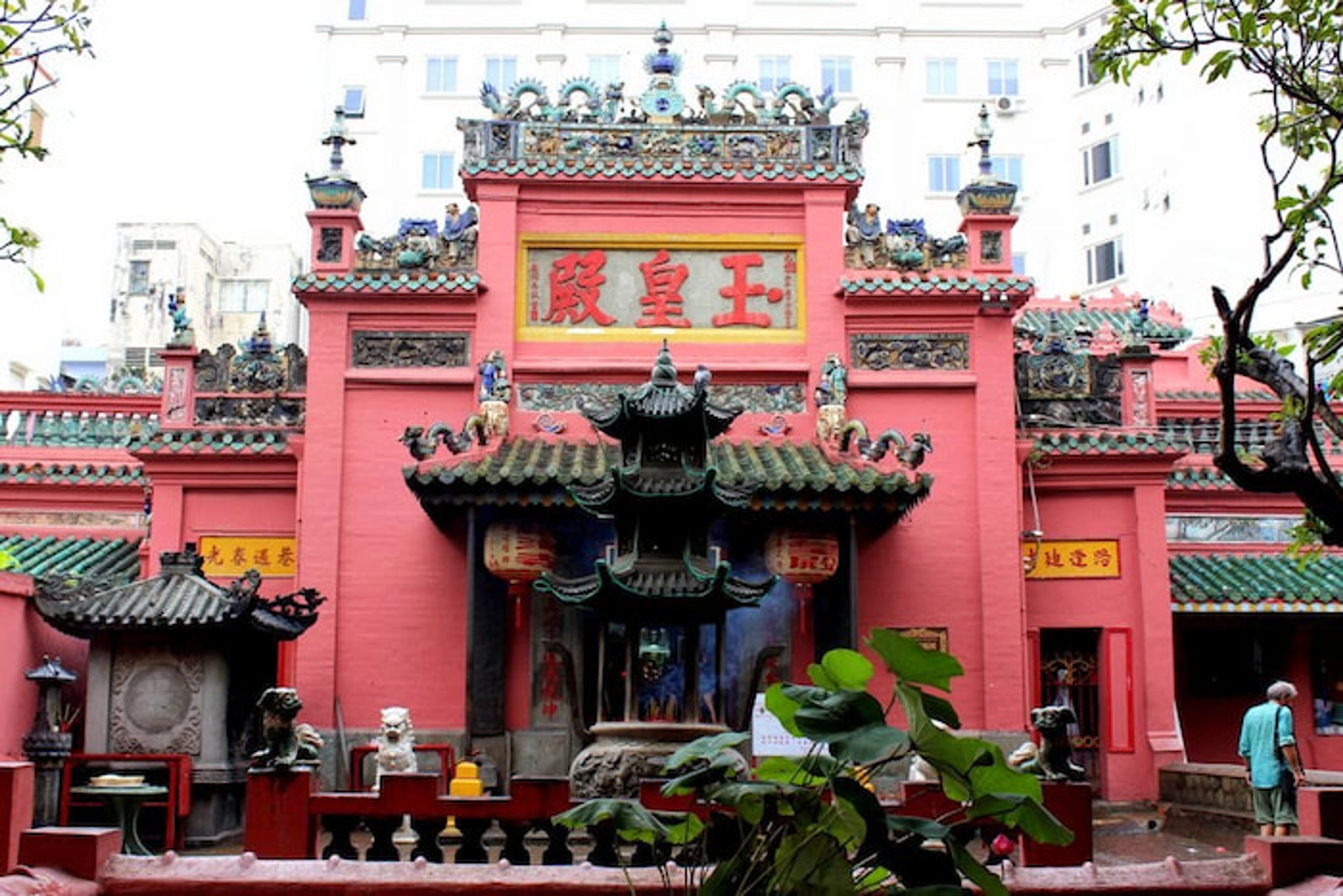

Are you seeking a tourist destination in Saigon that offers not only cultural and religious value but also boasts unique and captivating architectural beauty, while still encompassing an aura of mystery and sanctity? Join BDATrip to the Jade Emperor Pagoda, one of the most famous and sacred temples in Ho Chi Minh City.
The Jade Emperor Pagoda is a well-known temple in Saigon, also referred to as Phuoc Hai Temple, Buddha Temple, and King's Pagoda. Its architecture is distinctively Chinese, constructed in the late 19th century by a Chinese monk named Huyen Quang Tu Dao. Later, it was further developed in the early 20th century by another Chinese named Luu Minh (also known as Luu Dao Nguyen), a follower of the Ming Sect, a significant Buddhist faction in China at that time, with a religious focus on the Maitreya Buddha. Luu Minh and his allies used the pagoda as a secret meeting place, plotting to overthrow the Manchu dynasty.
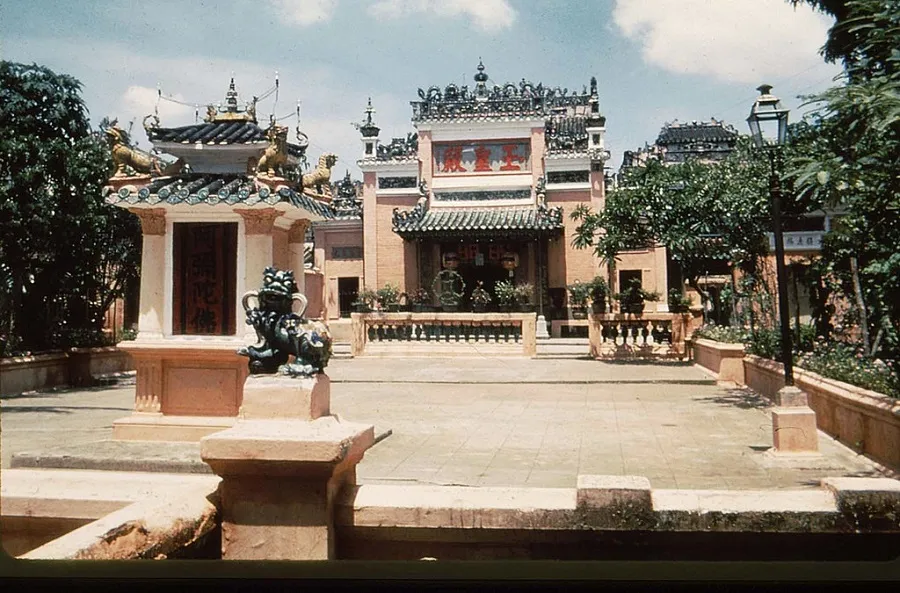
In 1982, the pagoda was handed over to Venerable Thich Vinh Khuong, a Vietnamese, and became part of the Buddhist Church of Vietnam. In 1984, it was renamed Phuoc Hai Tu, but locals still commonly refer to it as the Jade Emperor Pagoda because the main hall worships the Jade Emperor and other familiar gods in Chinese beliefs.
The pagoda is a sacred temple, attracting many Buddhist followers and locals to pray for peace, children, and love. It is also a popular tourist spot, drawing many domestic and international visitors. On the 9th day of the first lunar month each year, the pagoda usually organizes the Jade Emperor Festival, considered the most important event at the temple. This is also traditionally celebrated as the birthday of the Jade Emperor. By 1994, the temple was officially recognized as a national architectural and artistic monument. In 2016, the temple was visited by the then-President of the United States, Barack Obama, during his official visit to Vietnam.
The Jade Emperor Pagoda is built in the “three halls and two courtyards” style, meaning it has three main halls and two auxiliary ones. The halls are connected by winding corridors with red-tiled roofs and yellow wooden pillars.
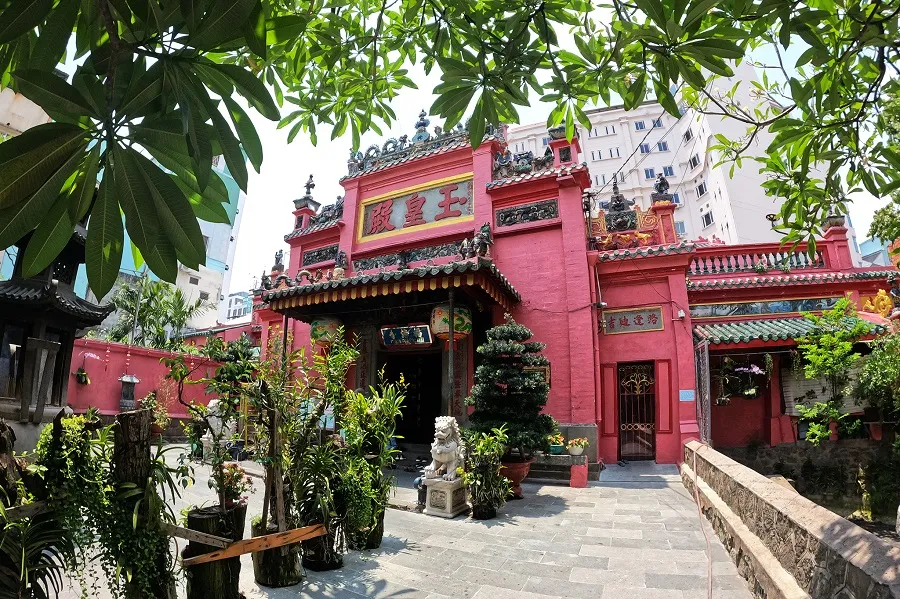
The temple is decorated with various statues of Buddha, immortals, dragons, and phoenixes, made from different materials, as well as being intricately carved and brightly painted. The Buddha statues are placed on high altars, surrounded by exquisitely crafted ceremonial objects… creating an atmosphere of solemnity and dignity. The statues here carry various spiritual meanings, such as the statues of immortals symbolizing prosperity and peace, or the dragon and phoenix on the temple roof representing harmony, peace, and prosperity.
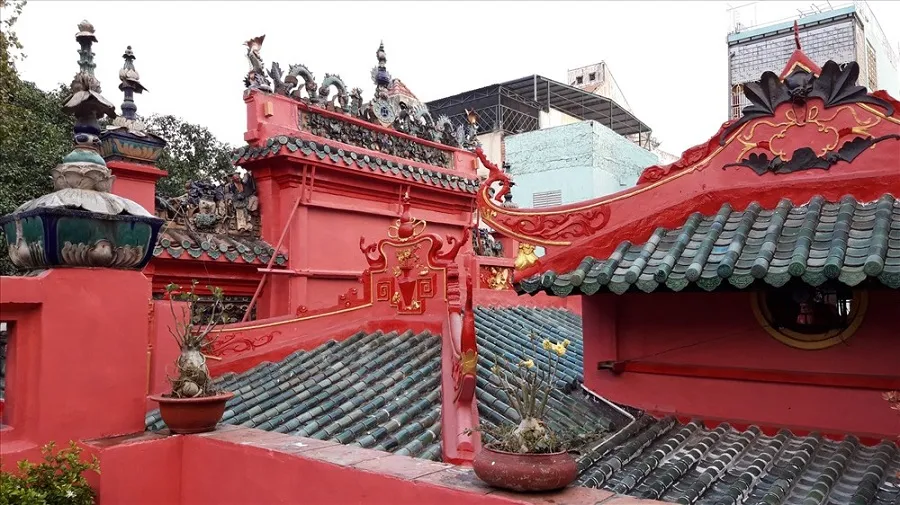
The temple also displays many paintings, calligraphy, lanterns, bells, drums… reflecting Chinese culture. The paintings depict landscapes, animals, fruits, characters… of China, painted in watercolor or ink on paper or silk. The calligraphy features proverbs, blessings, scriptures… of Buddhism or Taoism, written in Chinese or Nom script. Lastly, the lanterns, bells, drums… are hung in the corridors or temple yard, in warm red and gold colors, creating a glittering effect.
The Jade Emperor Pagoda worships Lord Buddha Shakyamuni, the Maitreya Buddha, and the Jade Emperor – the supreme deity in Taoism, overseeing human fate.
Lord Buddha Shakyamuni - the founder of Buddhism, is enshrined in the main hall of the temple. The bronze Buddha statue, 4 meters tall, weighing 3.5 tons, was cast in 1925, gilded, and illuminated from above, creating a solemn and serene presence. Next to Lord Buddha Shakyamuni is the God of Wealth - the deity of wealth, prosperity, and abundance.
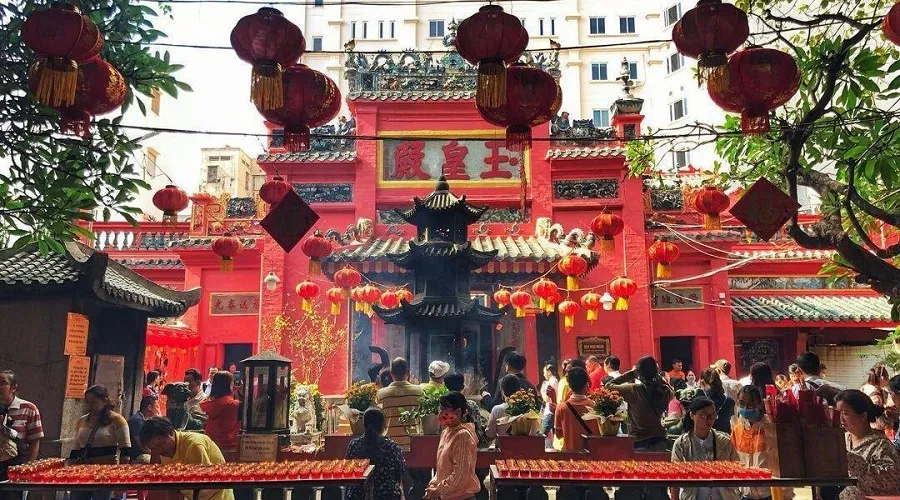
In the left auxiliary hall, the Maitreya Buddha - the Proselytizing Buddha, who spread Buddhism in India, is worshipped. The wooden Buddha statue, 2.5 meters tall, weighing 1.5 tons, carved in 1905, has a chubby, smiling appearance, symbolizing joy, abundance, and happiness. Next to the Maitreya Buddha is Guan Gong - the god of justice, loyalty, and bravery.
The right auxiliary hall worships the Jade Emperor - the supreme deity in Taoism, who oversees human fate, has the power to judge and bless sentient beings. The bronze statue of the deity, 3.7 meters tall, weighing 2 tons, cast in 1925, has a majestic and solemn appearance, symbolizing justice, authority, and responsibility.
Additionally, the temple also venerates numerous other deities, each with their own specific roles and powers, such as the Earth God, worshipped at the outer yard in front of the temple gate, and the Lady Buddha, goddess of fertility, worshipped in the inner yard behind the main hall.
The Jade Emperor Pagoda is located at 73 Mai Thi Luu Street, District 1, Ho Chi Minh City. This imposing and sacred temple is built in the Chinese architectural style by a Guangdong native named Luu Minh, also known as Luu Dao Nguyen.
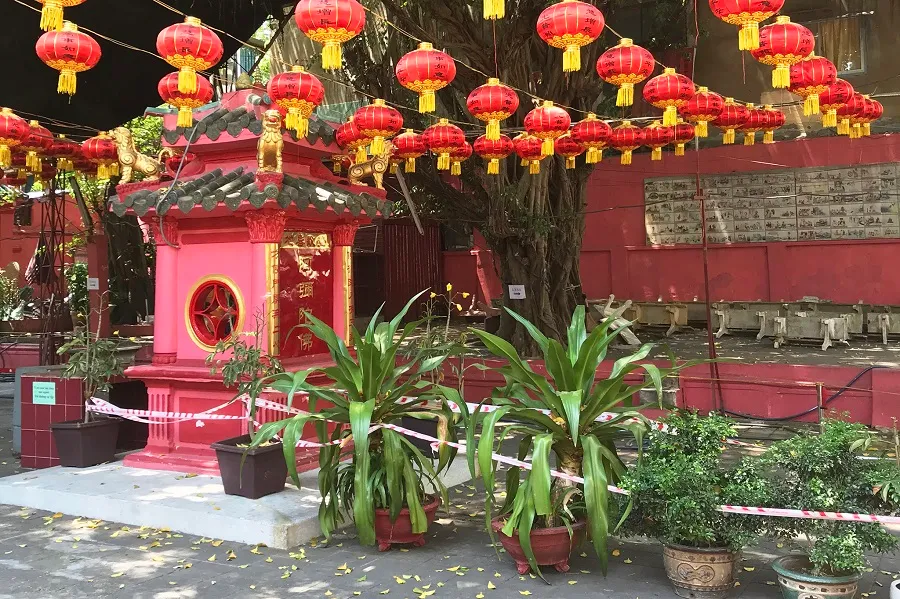
To reach the pagoda, you can choose from various transportation options depending on your location. You can take a bus, motorcycle taxi, taxi, Grab, Gojek, Bee… You can refer to bus routes 18, 93, 150, and stops near the pagoda such as Tran Hung Dao, Nguyen Dinh Chieu, Dinh Tien Hoang, Television Station, Mac Thi Nho Church, Da Kao…. If traveling by motorcycle or car, you can follow Nguyen Thi Minh Khai Street and then turn right onto Phung Khac Khoan, Dien Bien Phu, Nguyen Van Giai, Mai Thi Luu. The temple's opening hours are from 7 am to 6 pm daily, and from 5 am to 7 pm on the first and fifteenth day of the lunar month to accommodate your visit.
The Jade Emperor Pagoda is renowned as a sacred place for praying for children, thus many families come here to pray for the blessing of having healthy, obedient, and intelligent children. It is believed that the benevolence of the Maitreya Buddha and the Jade Emperor will bestow this blessing upon them.

In the child-praying ritual at the pagoda, people usually bring offerings such as flowers, fruits, candies, candles, incense, and paper money to the altar. A unique custom here is to buy small bells shaped like children, inscribing one's name and birthdate along with their partner's, then hanging them on a tree in the temple yard, believing it will ease childbirth and bring good fortune. At the end of the ritual, people often take home animal-shaped bells as a keepsake, believing they will bring health and wisdom to their children.
The Jade Emperor Pagoda is a destination for many souls seeking true love. It is believed that the support from the Maitreya Buddha and the Jade Emperor will bring a beautiful, harmonious, lasting, and joyful relationship.
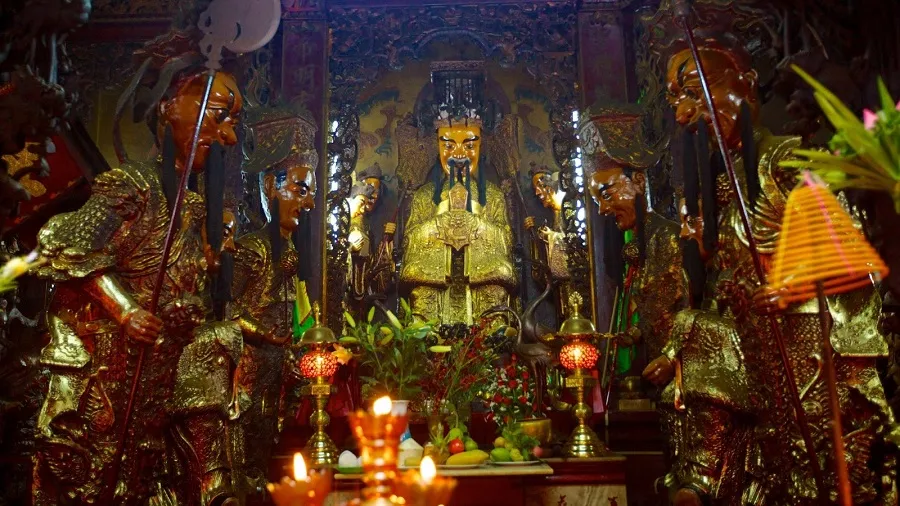
During the love-praying ritual at the pagoda, participants usually bring offerings such as flowers, fruits, candies, candles, incense, and paper money. Additionally, a popular spiritual activity is to buy heart-shaped bracelets, inscribe one's name and birthdate along with their loved one’s, and wear them as a prayer for love. These bracelets are believed to facilitate the search for and maintenance of love.
Not only famous for its sanctity in praying for wealth and children, the Jade Emperor Pagoda also attracts those seeking peace and health. Devotees believe that worshipping Lord Buddha Shakyamuni and the Jade Emperor here will bring long-lasting health and peace, as well as relief from all sorrows.
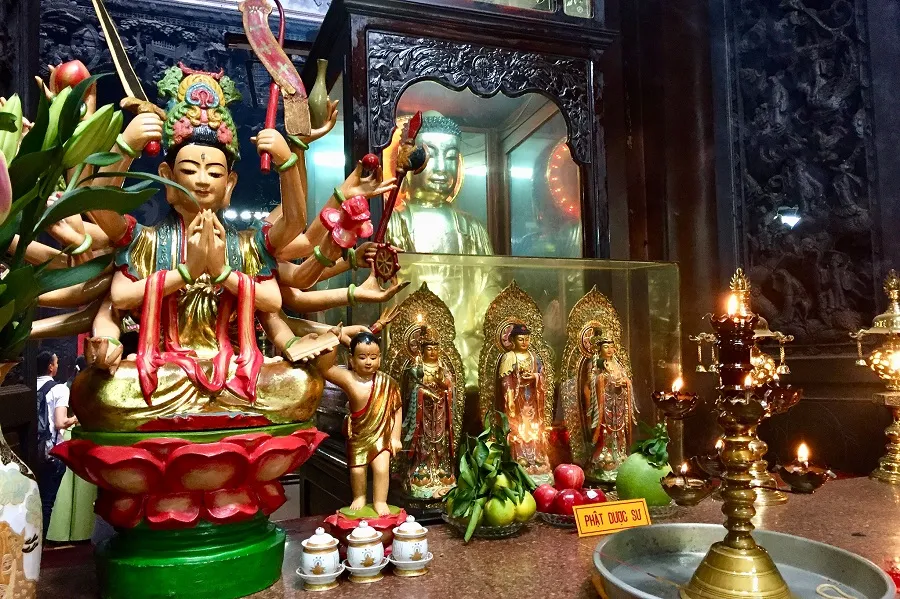
During the prayer ceremony, items like flowers, fruits, candies, candles, incense, and paper money are brought as offerings. When visiting the temple, worshippers can buy dragon-shaped combs, inscribe their names and birthdates along with their relatives’, and gently comb through their hair, believing it will bring health and peace.
To enjoy a pleasant and fulfilling visit to the Jade Emperor Pagoda, you should note the following:
- Choose modest, elegant attire, avoiding overly short, revealing, or flamboyant clothing, as well as simple footwear for easy removal when entering temple halls.
- Follow the temple’s regulations and guidelines, such as not bringing pets, no smoking, no eating or drinking, no flash photography,… to show respect for the devotees, staff, and monks of the temple.
- Engage in religious and cultural activities at the temple, such as worship ceremonies, prayer, listening to sermons, chanting, watching lion and dragon dances… to experience more and feel the sanctity and liveliness of the temple.
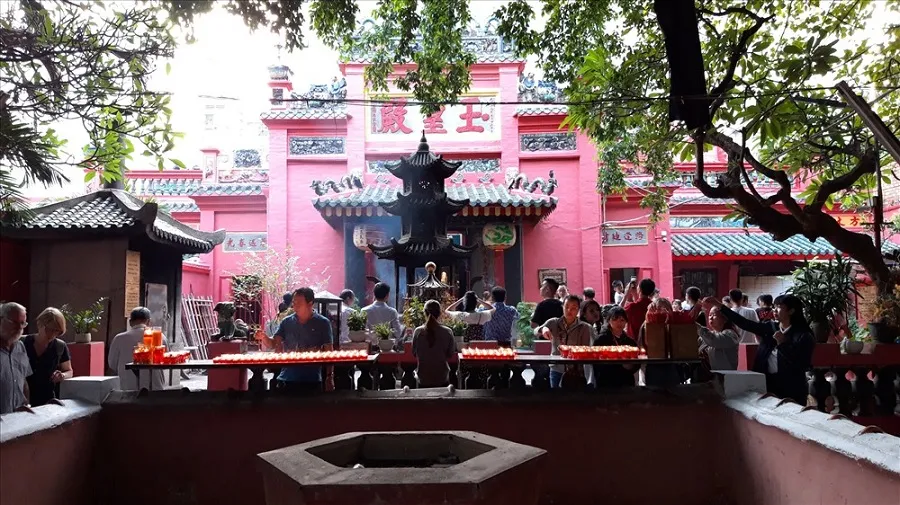
After visiting and praying for blessings at the Jade Emperor Pagoda, tourists can continue exploring nearby tourist spots such as:
- Notre Dame Cathedral: A cathedral built in 1877 in the Gothic style, with red tile roofs, tall bell towers, and stained glass windows. It is a place of worship for the Virgin Mary, symbolizing faith and hope for Catholics.
- War Remnants Museum: Established in 1975, the museum exhibits evidence, images, and artifacts related to the wars Vietnam has endured, especially the Vietnam War against the US.
- Tao Dan Park: Established in 1969, the park features lush greenery, floral gardens, trails, ponds, bridges, and fountains. It's a popular spot for relaxation, recreation, exercising, and socializing among locals and tourists.
- Ben Thanh Market: Built in 1914, the market offers a wide range of goods, from clothing and footwear to handbags, making it an ideal spot for shopping, enjoying local cuisine, and experiencing the culture and lifestyle of Saigon.
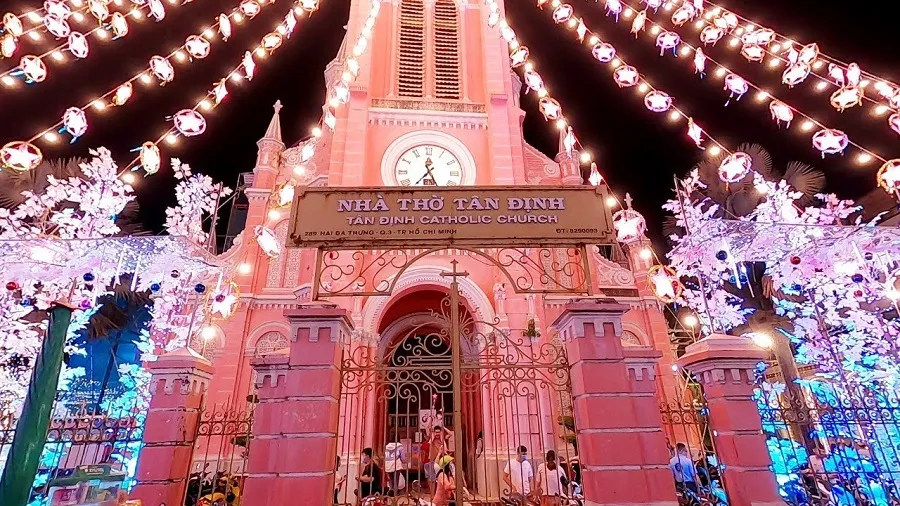
The Jade Emperor Pagoda represents a fascinating destination that anyone visiting Saigon should experience. Here, you have the opportunity to admire captivating architectural artworks and explore the unique spiritual beauty. Don't miss the chance to visit this place on your journey!
Copyright © 2022 BDATrip.com | All rights reserved.